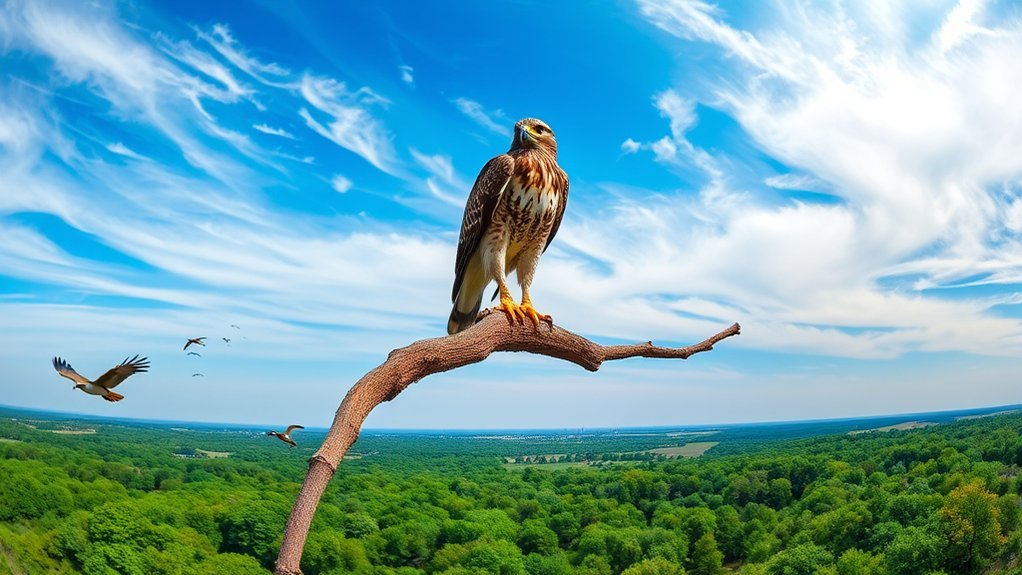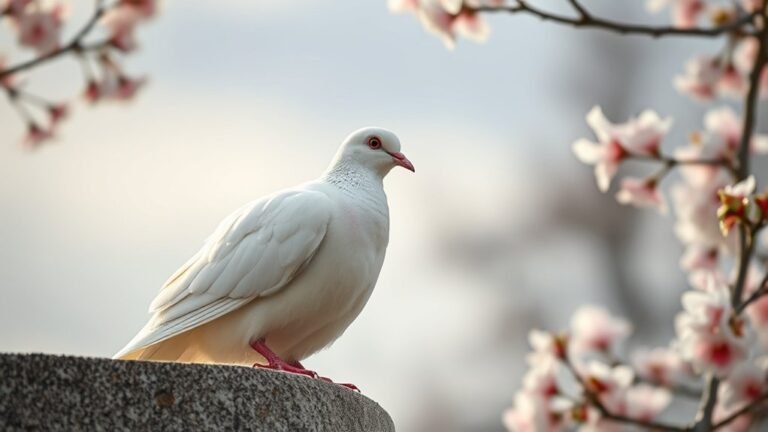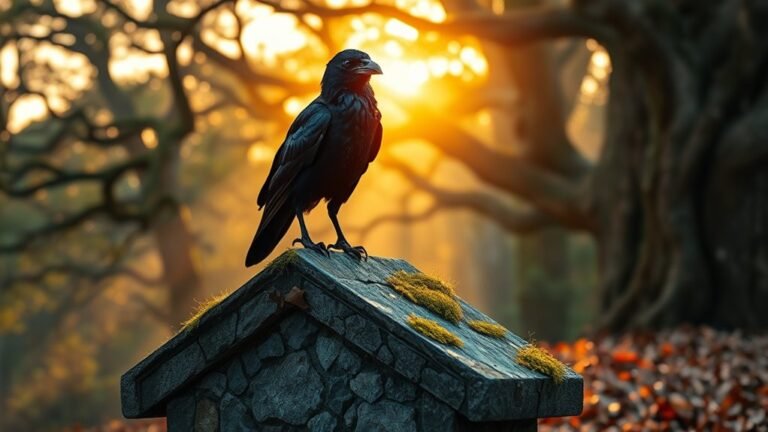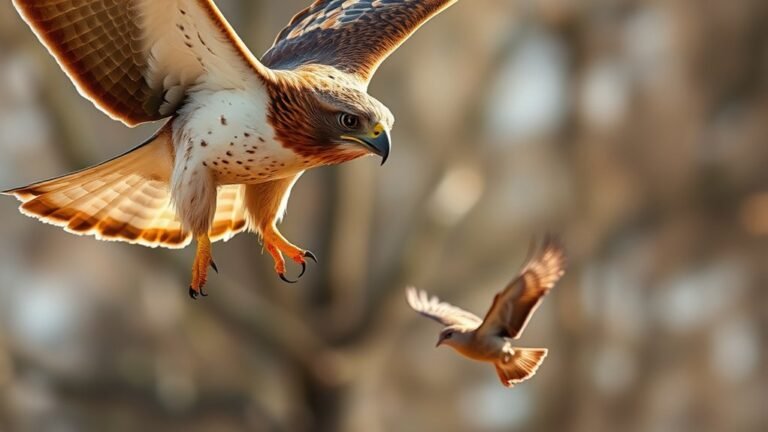Hawks in Illinois: A Comprehensive Look
Hawks in Illinois come in many types, and each one has its own special skills that help it live in different places. For example, the Red-tailed Hawk is big and strong. It flies high above the prairies. The Cooper's Hawk is smaller and quicker, and it can zip through city areas easily.
These birds are important for nature because they help keep the balance in their habitats. As we learn more about their habits and homes, we can see the issues they face, especially when their migration paths change.
Every hawk has unique traits, and by studying them, we can understand how healthy their environments are. So, let's appreciate these amazing birds and the roles they play in our world!
A Quick Overview
Illinois has many types of hawks, like the Red-tailed Hawk, Cooper's Hawk, and Broad-winged Hawk. Each kind has special features that make them easy to recognize.
Hawks show different behaviors and skills. For example, Cooper's Hawks hunt quietly in cities, while Northern Harriers look for food in wet areas like marshes.
Hawks move with the seasons. They travel to find warmer weather and food. These changes help them breed and survive.
To help hawks, we need to protect their homes. This means keeping their habitats safe. Education and community programs can help people understand why hawks are important.
If you want to watch hawks, there are some tips to make it easier. Learn how to identify them and take good photos. Joining local events can also make your time outdoors fun and help you connect with nature.
Overview of Hawk Species in Illinois

Hawks are interesting birds that live in Illinois. They attract many bird watchers and nature lovers. You can spot different types of hawks, like the Cooper's Hawk and Sharp-shinned Hawk. Each kind has its own special features.
When you want to identify a hawk, look at its size, tail shape, and color. For example, the Red-shouldered Hawk has bright rust-colored feathers, while the Broad-winged Hawk has more muted, patterned feathers.
If you want to take pictures of hawks, use a camera with a fast shutter speed to catch their quick movements. A telephoto lens helps you zoom in close without scaring them away.
Learning about these hawks and improving your photography skills can help you enjoy the beautiful birds in Illinois even more!
The Red-tailed Hawk: A Symbol of the Prairie

The Red-tailed Hawk is one of the most famous hawks you can find in Illinois. You can easily spot it because of its unique colors and big wings.
This beautiful bird has special features that help it hunt in the open prairie, where it mostly eats small animals like mice and rabbits.
It has sharp eyes that can see prey from high up in the sky. This bird represents strength and the bonds between different animals in its home.
Watching Red-tailed Hawks can help you notice the amazing beauty of Illinois' prairies. They remind us how important nature is in our lives.
The Northern Harrier: Master of the Marshes

When you visit the marshes in Illinois, keep an eye out for the Northern Harrier. This bird of prey is special because of how it hunts and lives in wet areas.
The Northern Harrier flies low over the marsh, looking for food like small mammals and birds. You can spot a male Harrier by its beautiful gray feathers. The female has brown feathers, making them easy to tell apart.
Watch how the Northern Harrier changes its hunting style based on where it's and what time of year it is. They build their nests in hidden spots among the reeds, showing how much they connect with their homes.
The Northern Harrier is a true symbol of Illinois' marshes. Seeing one in action is a real treat!
The Cooper's Hawk: Agile Hunter in Urban Areas
The Cooper's Hawk is a smart bird that lives in cities. It has learned to hunt and survive in busy areas where people are all around.
You can often see these hawks flying through trees and around buildings as they look for food.
They are quick and stealthy hunters. They usually hide and then surprise smaller birds, like pigeons and jays, that hang out in neighborhoods. This shows how well they can adjust to living near people.
By learning about these amazing birds, we can appreciate the different kinds of wildlife that live in our cities.
Even in busy places, nature finds a way to thrive!
The Sharp-shinned Hawk: Stealthy Feline
The Sharp-shinned Hawk is a small bird of prey that's very good at adapting to different environments. It's smaller than many other hawks but doesn't let that stop it from being an amazing hunter.
This hawk is great at moving quietly through dense forests. It uses stealth to hunt for food, which helps it sneak up on small birds and animals.
When you watch a Sharp-shinned Hawk, you might see how well it blends in with its surroundings. This camouflage helps it get close to its prey without being noticed.
Then, with a quick movement, it strikes with precision. This not only shows how skilled it's but also helps keep nature balanced.
If you enjoy birdwatching, spotting a Sharp-shinned Hawk in action can be really exciting. It gives you a chance to see how these fascinating creatures hunt and live in their environment.
Migration Patterns of Illinois Hawks
Hawks in Illinois have interesting migration patterns. These birds move from one place to another based on the seasons.
In the fall, hawks like the Red-tailed Hawk and Cooper's Hawk fly south to find warmer weather. They do this because the days get shorter, and food becomes harder to find. While flying, they use warm air currents to help them save energy.
In the spring, the hawks return north to find good places to breed. Many things can affect their migration, like the weather and changes in their habitat.
Watching these birds can help us understand more about their lives and how important they're to our environment. Hawks play a key role in keeping the balance in nature throughout Illinois' different landscapes.
If you keep an eye out for them during these seasons, you can learn a lot and enjoy observing their journey!
Breeding Habits and Nesting Behaviors
In spring, hawks come back to Illinois to start their breeding season. They set up their own territories and find places to build nests. Male hawks put on impressive shows to win over female hawks. They fly high and show off their skills, which attracts potential mates.
Once they pair up, hawks look for good spots to make their nests. They usually choose tall trees or cliffs that keep them safe from other animals. The female hawk often leads the nest-building, using twigs, grasses, and feathers to create a cozy home for their eggs.
Hawks work together during this time. They share the job of keeping the eggs warm and feeding their young. This teamwork helps them build a strong bond as a pair.
Watching this process shows us how hawks interact and live in Illinois. It's a fascinating part of their life!
Diet and Hunting Techniques
Hawks fly high in the sky over Illinois. They've sharp eyesight and strong skills to help them find and catch their food. They usually hunt small animals like mice, birds, and even reptiles. These snacks give them the energy they need to survive.
Hawks use different ways to catch their food. Sometimes, they dive down from the sky to surprise their prey. They're really good at flying fast and can make quick turns in the air.
You'll often see them resting on tree branches, waiting and watching carefully for any movement on the ground.
Habitat Preferences and Range
Hawks live in many different places in Illinois. They like open fields because they can see their food easily from the sky. They also sit on tree branches to make nests.
In thick forests, hawks hide to hunt small animals.
Some hawks fly to warm places during winter. Others stay in Illinois and get used to the cold weather. Knowing where hawks like to live helps us see how important they're to nature.
When we learn about their homes, we feel more connected to nature. We can also help keep hawks safe. By protecting their habitats, we help make sure there will be hawks for a long time!
The Role of Hawks in Ecosystem Health
Hawks are great hunters. They help keep nature balanced. By catching small mammals and birds, hawks control their numbers. This is important because too many herbivores can eat too many plants, leading to problems like overgrazing and damaged habitats.
When hawks are healthy and doing well, they help other animals and plants thrive too. Their presence makes ecosystems diverse and strong. It's interesting to see how these birds affect food chains and support various life forms.
Understanding hawks helps us see how every animal plays a part in nature. Each species, including hawks, is connected in a big web of life. By appreciating these connections, we deepen our bond with nature and recognize its importance.
Conservation Challenges Facing Hawks
Hawks play an important part in our ecosystem, but they face many problems that hurt their populations. First, habitat destruction and human activities make it harder for hawks to find places to nest. This takes away their homes and pushes them closer to danger.
Climate change also makes things tough for hawks. It changes their migration patterns and affects how much food is available for them.
On top of that, the use of pesticides can harm hawks and lower their ability to reproduce. Illegal hunting remains a serious threat too, which can further reduce their numbers.
The good news is that there are efforts to help protect hawks. Many people are working to save their habitats and teach others about their importance.
How to Spot Hawks in Illinois
Have you ever wanted to know how to tell different hawks apart while watching them in Illinois? Here are some simple tips to help you spot these amazing birds.
First, look for their size, wing shape, and colors. For example, the Red-tailed Hawk has a bright red tail. On the other hand, the Cooper's Hawk has a round tail and a skinny body.
Using binoculars can help you see them better. You can also learn a lot by watching how they behave.
If you want to take pictures, be patient and quiet. Use a zoom lens to get clear shots, and try to take photos in the early morning or late afternoon when the light is best.
By practicing these tips, you'll enjoy watching hawks in Illinois even more and feel a closer connection to nature.
Happy hawk watching!
Frequently Asked Questions
What Time of Year Are Hawks Most Active in Illinois?
Hawks are most active during migration seasons in Illinois. This happens in spring and fall. During these times, they search for food. This behavior creates great chances for people who love nature to watch these beautiful birds. If you enjoy birdwatching, spring and fall are the best times to spot hawks in action!
Are There Any Hawk Watching Events in Illinois?
Yes, there are fun hawk watching events in Illinois! You can find these events listed on local calendars. Look for guided outings during the busy migration times. These are great chances to meet other bird lovers and learn more about hawks. You'll see these amazing birds up close and get to know their habits. Enjoy the experience!
How Can I Report a Hawk Sighting?
To report a hawk sighting, here's what you can do. First, pay attention to details like the bird's color and size. These are important for identifying the type of hawk you saw.
Next, share your sighting with local wildlife groups. They collect this information to help them learn more about hawks. Your observations can make a difference! Remember, every sighting counts.
Are Hawks Protected Under Illinois Law?
Yes, hawks are protected by Illinois law. This law keeps them safe from hunting and stops people from destroying their homes. These protections help hawks survive and allow everyone to enjoy nature more.
What Should I Do if I Find an Injured Hawk?
If you find an injured hawk, please call a wildlife rescue group right away. They know how to help the bird and will tell you what to do next. It's best not to touch the hawk yourself. Touching it could cause more problems for the bird. Just wait for the experts to arrive and help.

Luna is the passionate founder and author of Birds and You, a website dedicated to sharing her love for birds with fellow enthusiasts. Through her engaging articles and guides, she aims to educate and inspire others to explore the fascinating world of birds. When she’s not writing, you can find Luna observing birds in their natural habitats or sharing beautiful bird photography on Pinterest. Join her on this journey to celebrate and protect our feathered friends!







